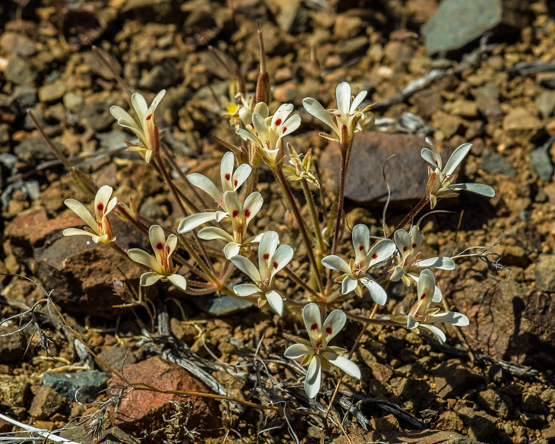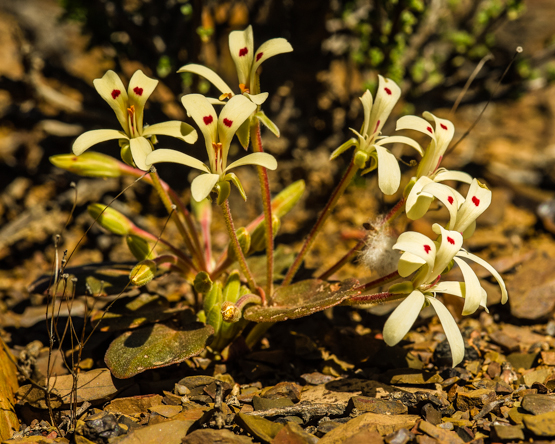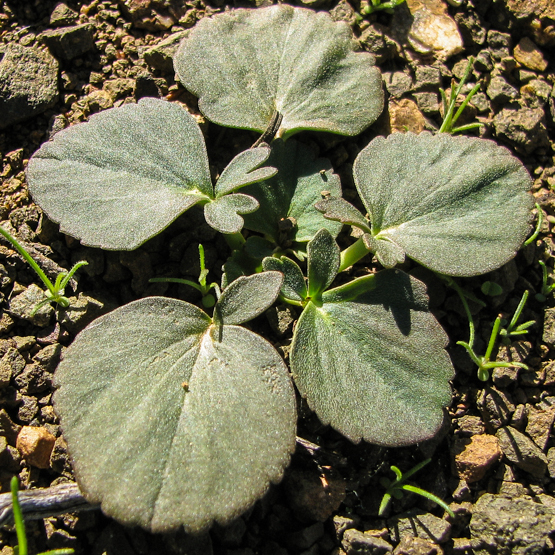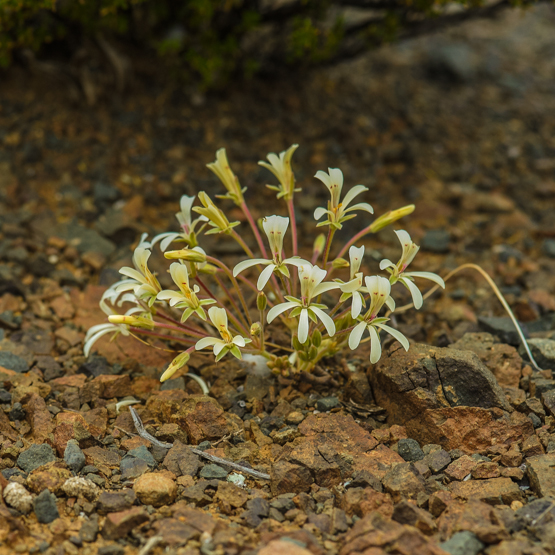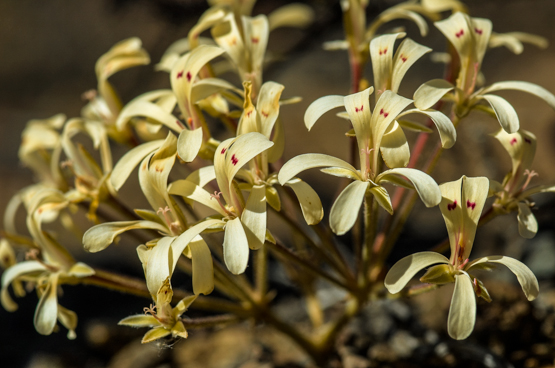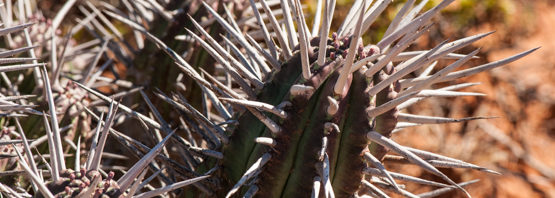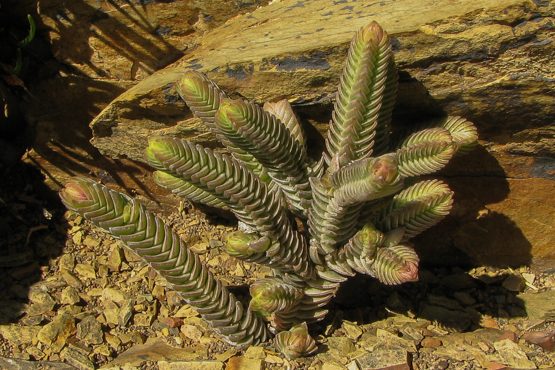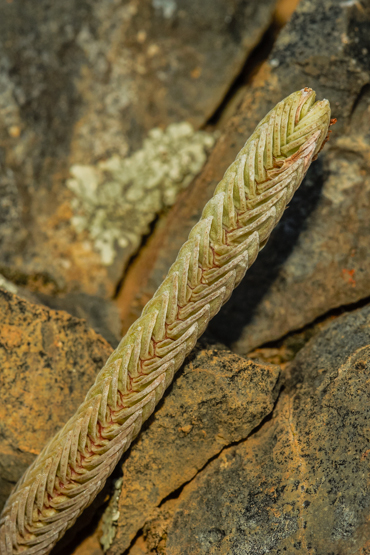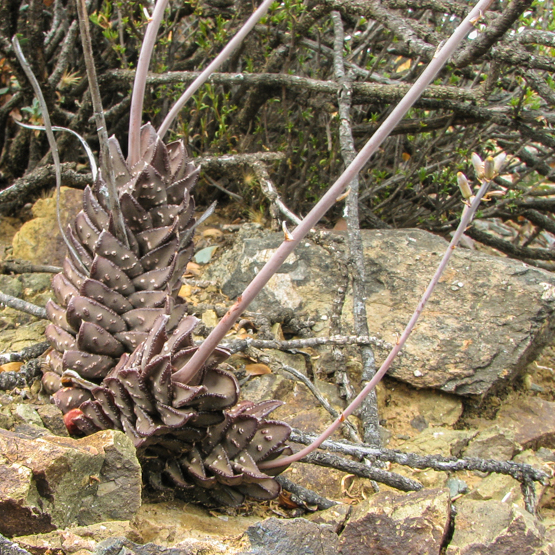Tag: Great Karoo
Pelargonium nervifolium (1)
Apparently not all experts agree on what is a succulent and what is not. The subject of this post e.g. is mentioned in the List of Southern African Succulent Plants (1997), but not in the Illustrated Handbook of Succulent Plants (2002).
Well, whether a succulent or not, it is an interesting tuberous geophyte ( a plant that has its regenerating buds below soil-level, often with big underground storage organs and short-lived growth above ground).
The leaves are undivided or divided into 3 leaflets.
In September-October the plants are decorated with white to pale yellow flowers about 1.7 cm across – up to 17 in each inflorescence.
The plants are widespread in the winter rainfall area of the western Karoo, southwards to Karoopoort and Matjiesfontein, usually on low shale ridges in direct sunlight and often in large numbers.
Crassula congesta (1)
In 1985, Volume 14 of the Flora of southern Africa was published, in which H. R. Toelken dealt with the familie Crassulaceae. His description of Crassula congesta starts with the word “Biennials”. In other words, plants that germinate and grow in the first year, and flower and set seeds in the second year, after which they die.
So far so good, but … A couple of years before (1977), “A revision of the genus Crassula in southern Africa” by the same botanist had been published by the Bolus Herbarium. In this publication it is stated that:
“These plants are described as biennials but this is true only under favourable conditions. In the field, the plants often become much older before they flower but usually the whole plant dies after flowering. The plants are usually monocarpic * but regeneration after flowering may sometimes occur, but usually only when the plant has been injured and/or if the terminal inflorescence was cut of”.
* A monocarpic plant flowers only once and then dies after the seeds have ripened.
There are two subspecies:
ssp. congesta, which has leaves that are curved upwards and is found North and Northeast of the Witteberge and
ssp. laticephala, with the leaves curved downwards and occurring Southeast of that mountain range, as far East as Oudtshoorn.
In this post only pictures of the latter subspecies are shown.
Euphorbia esculenta (2)
Euphorbia esculenta (1)
Of the about 30 species of the so-called medusoid group of Euphorbias, this is one of the biggest, sometimes reaching a metre or even more in diameter (including the branches).
It is very common over a large area stretching from the dry sandy plains east of Addo, northwards as far as Graaff Reinet and southwestwards towards the Baviaanskloof and the eastern border of the Little Karoo.
When the substrate is very hard, the main body is pushed above ground.
The name esculenta means “edible”, because the plants can be used as fodder in times of drought.
The flowers with their white woolly bracteoles give off a pleasantly sweet scent.
Euphorbia ferox (2)
Euphorbia ferox (1)
Plants of this species form clumps up to 15 cm tall and about 60 cm in diameter. The name refers to the armour of strong, usually straight, spines, which may be up to over 3 cm long.
The plants are found on flats and rocky outcrops from the western Great Karoo to Graaff-Reinet and Steytlerville, often in great numbers.
Crassula muscosa var. muscosa (2)
Crassula muscosa var. muscosa (1)
The great Linnaeus himself described this species way back in 1760. The adjective muscosus means moss-like, which is certainly an apt name for some of the many guises in which this species comes.
In var. muscosa the branches are usually 20-40 cm long (sometimes up to 80 cm) and upright, creeping or scrambling. An old synonym for it is Crassula lycopodioides, referring to Lycopodium or clubmoss. This variety is found from southern Namibia to South Africa’s South coast, but is especially widespread in Namaqualand and the Great Karoo and neighbouring areas. Even within this one variety (there are four in total) one comes across a great number of different forms. In the wild the leaves are generally greyish green to brown; in cultivation one also finds other colours.
The plants often grow in very dry spots. The same thin and densely leaved branches that make them look so delicate, seem to be rather effective in condensing dew and fog and channeling this moisture to their roots.
Astroloba bullulata
Most of the time this beautiful and distinctive species is not easy to find, not only because it is rather uncommon, but also because it prefers to grow in the shelter of shrubs. It branches only reluctantly and may reach a height of 30 cm.
The attractive flowers appear from November to June.
The main distribution area is from Sutherland to Ceres and Laingsburg. A locality near Bonnievale and one near Prince Albert are also mentioned in literature.
The last picture shows a plant in cultivation.


